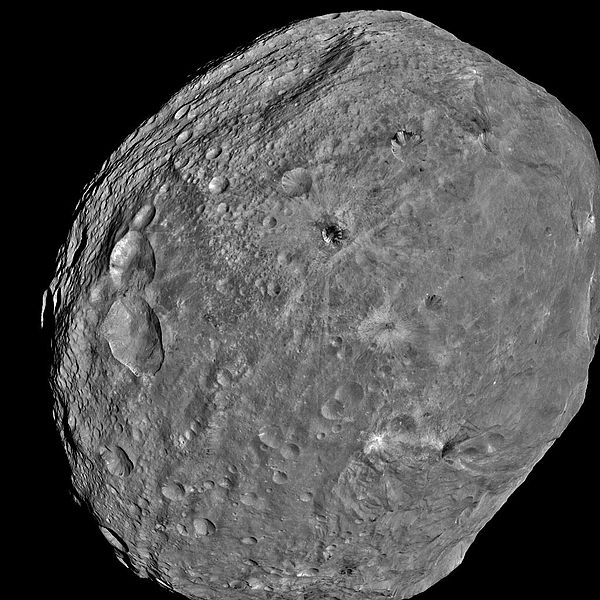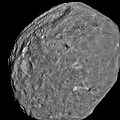Fasciculus:Vesta Full-Frame.jpg
Appearance

Mensura huius perspectionis: 600 × 600 elementa imaginalia. Aliae mensurae: 240 × 240 elementa imaginalia | 480 × 480 elementa imaginalia | 768 × 768 elementa imaginalia | 1 024 × 1 024 elementa imaginalia.
Sua resolutio (1 024 × 1 024 elementa imaginalia, magnitudo fasciculi: 166 chiliocteti, typus MIME: image/jpeg)
Historia fasciculi
Presso die vel tempore fasciculum videbis, sicut tunc temporis apparuit.
| Dies/Tempus | Minutio | Dimensiones | Usor | Sententia | |
|---|---|---|---|---|---|
| recentissima | 21:08, 1 Augusti 2011 |  | 1 024 × 1 024 (166 chiliocteti) | Little Mountain 5 | == {{int:filedesc}} == {{Information |Description={{en|1=Full-frame image of Vesta. NASA's Dawn spacecraft obtained this image of the giant asteroid Vesta with its framing camera on July 24, 2011. It was taken from a distance of about 3,200 miles (5,200 |
Nexus ad fasciculum
Ad hunc fasciculum nectit:
Usus fasciculi per inceptus Vicimediorum
Quae incepta Vici fasciculo utuntur:
- Usus in ba.wikipedia.org
- Usus in bs.wikipedia.org
- Usus in de.wikipedia.org
- Usus in el.wikipedia.org
- Usus in en.wikipedia.org
- Usus in en.wikiversity.org
- Usus in eo.wikipedia.org
- Usus in es.wikipedia.org
- Usus in he.wikipedia.org
- Usus in io.wikipedia.org
- Usus in it.wikipedia.org
- Fascia di Kuiper
- 50000 Quaoar
- Asteroidi troiani di Giove
- Oggetto transnettuniano
- Plutino
- Cubewano
- Caronte (astronomia)
- Cerere (astronomia)
- 4 Vesta
- 90377 Sedna
- 2 Pallas
- 3 Juno
- 5 Astraea
- 6 Hebe
- 8 Flora
- 9 Metis
- 10 Hygiea
- 15 Eunomia
- 16 Psyche
- Satellite asteroidale
- 21 Lutetia
- Asteroidi principali del sistema solare
- Centauro (astronomia)
- Eris (astronomia)
- Lista di asteroidi
- 87 Sylvia
- Asteroide areosecante
- Idra (satellite)
- Notte (astronomia)
- Asteroide binario
- Makemake (astronomia)
- Haumea (astronomia)
- Template:Asteroide
- 532 Herculina
- Famiglia Adeona
- Famiglia Coronide
View more global usage of this file.


